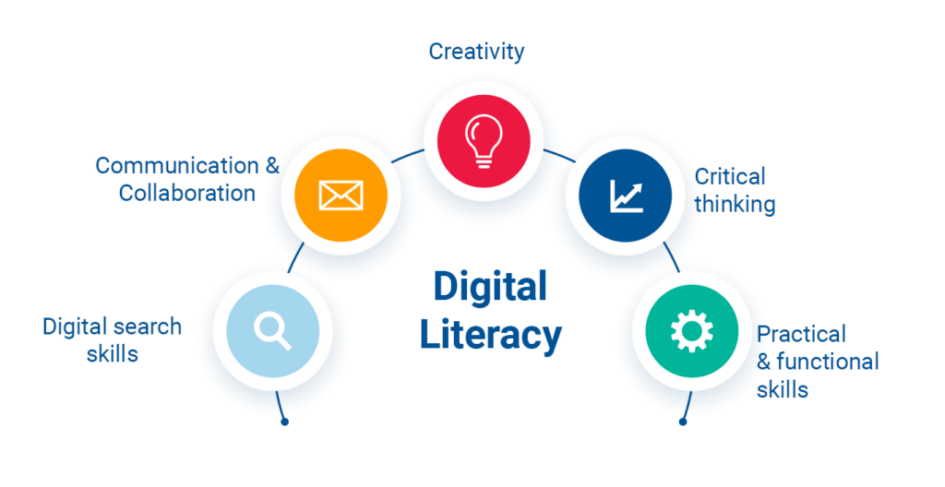What is digital literacy?
According to the Ministry of Education and Child Care, digital literacy is “the interest, attitude and ability of individuals to appropriately use digital technology and communication tools to access, manage, integrate, analyze and evaluate information, construct new knowledge, create and communicate with others”.
This definition is steeped in the communication and thinking core competencies. Communication is addressed twice in this definition: in reference to the fact that we utilize communication tools, and again when clarifying that digital literacy includes appropriate use of these tools to communicate with others. Often this communication takes the form of collaboration. Thinking is also central to the concept of digital literacy. Critical and reflective thinking are key to managing, analyzing and evaluating information. Creative thinking is used when constructing and creating new knowledge.
Personal and social core competencies are not directly mentioned in the definition but are still vital in digital literacy. This becomes more apparent when looking at BC’s Digital Literacy Framework, which outlines 6 different characteristics of digital literacy. The six characteristics can be seen in the visual below.

Digital literacy is about being a competent, responsible and safe member of the online community. Technology and the internet can be extremely valuable for furthering our education but there are also many skills needed to be able to use these resources well.
Developing digital literacy
How do we develop our digital literacy? There are many aspects of digital literacy so there are many ways that we can work on our own digital literacy. A lot of the practical learning is done through daily trial and error. In this day and age, we are constantly surrounded by technology and learning how to use it is becoming more integrated into our daily lives. There can also be an intentional component as well, learning from YouTube videos, peers, teachers and even professional courses. Research and Information Literacy is developed through formal education as well as reading and refining information in our spare time. This is also how we can improve our Critical Thinking, Problem Solving, and Decision Making; through practice and intentional education as well as more passive daily trial and error. Our Digital Citizenship is related to our digital footprint, which I address in another blog post. Overall these skills are ones that we need to be continually working on and refining, no matter what career or stage of life we are in.
Digital Literacy and Teaching at a SY level (grades 8-12)
The Government of BC’s Digital Literacy page provides grade-specific examples of activities that can be used to help build digital literacy in students. It includes the list of examples as well as the core competencies that are linked to each activity. In grades, 10-12 activities include publishing online portfolios, developing online content, researching, modelling legal and ethical behaviours, creating presentations, troubleshooting technology and using digital tools. This section of the page also has a table that neatly summarizes the connections between core competencies and digital literacy characteristics that I briefly examined in the introduction of this post.

With each new generation, students are becoming more familiar with technology (Nicholas and Ng). This familiarity does not always translate into digital literacy or competency however and it is important to teach things like critical thinking, digital citizenship and information fluency that may not develop as readily outside of classroom settings. Having these skills can help students in their learning journey and through their careers beyond the classroom.
References:
Ministry of Education and Child Care. Digital Literacy – Province of British Columbia. Province of British Columbia, https://www2.gov.bc.ca/gov/content/education-training/k-12/teach/resources-for-teachers/digital-literacy. Accessed 23 Oct. 2023.
Nicholas, Howard, and Wan Ng. “Mobile Digital Literacy of Australian Adolescent Students:” International Journal of Digital Literacy and Digital Competence, vol. 10, no. 3, July 2019, pp. 32–48. DOI.org (Crossref), https://doi.org/10.4018/IJDLDC.2019070103.
The BC Digital Literacy Framework | Scarfe Digital Sandbox. https://scarfedigitalsandbox.teach.educ.ubc.ca/the-bc-digital-literacy-framework/. Accessed 28 Oct. 2023.
